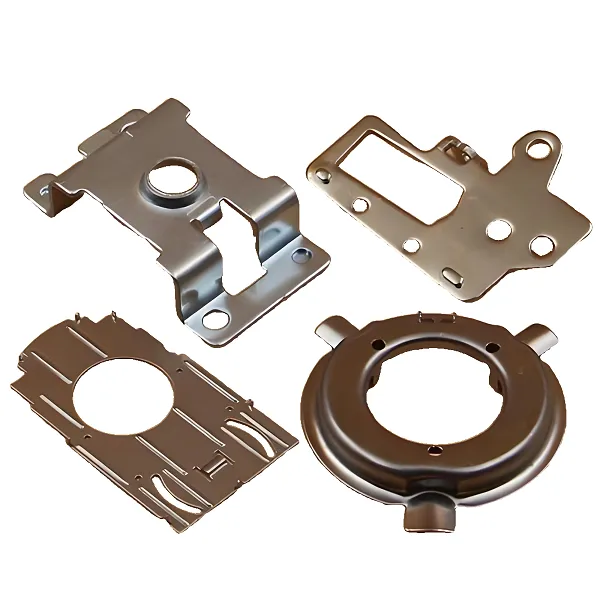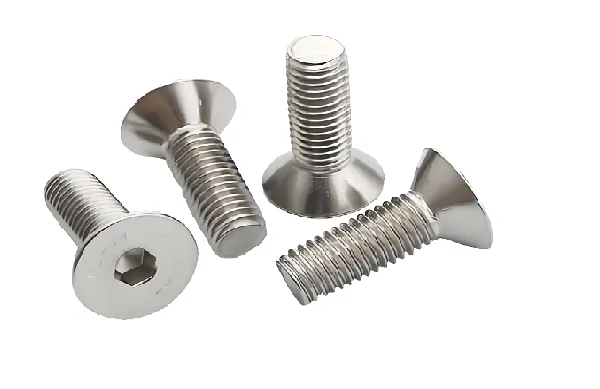In modern manufacturing, CNC (Computer Numerical Control) machined parts have become a key technology for realizing high-precision and high-efficiency production.CNC machine tools are able to automatically complete the machining of a variety of complex parts through computer program control, bringing unprecedented manufacturing capabilities to a wide range of industries. In this paper, we will discuss in depth the advantages of CNC Machining Parts, key components and their working principles, and reveal their importance in modern industry.

1. Advantages of CNC Machining Parts
CNC Machining Parts are known for their high accuracy, high efficiency, high repeatability and low labor costs. Compared to traditional manual machining, CNC machines are capable of running 24/7, greatly reducing reliance on operators. At the same time, CNC machines are able to achieve micron-level machining accuracy through precise computer control, meeting the needs of a wide range of high-precision parts. In addition, CNC machine tools are also easy to integrate with CAD (computer-aided design) and CAM (computer-aided manufacturing) systems, to realize the seamless transition from design to production, which greatly shortens the product launch cycle.
2. Key components of CNC machine tools
The complexity and high precision of CNC machine tools cannot be achieved without the collaborative work of its various key components. The following are the main components of a CNC machine and their functions:
Machine Control Unit (MCU): As the “brain” of the CNC machine tool, the MCU is responsible for reading the G-code provided by the input device and converting it into motion commands for all axes of the machine tool, and realizing the precise movement of the tool and workpiece by precisely controlling the servo motors, ball screws and other drive systems.
Drive system: Includes servo motors, ball screws and linear guides, which are responsible for moving the tool and workpiece along each axis of the machine. Servomotors precisely control the rotation of the ballscrews to drive the precise movement of the bed and spindle.
Feedback System: Measures the actual position of each axis of the machine through linear or rotary encoders and feeds the information back to the MCU, which adjusts the motion commands according to the feedback information to ensure that the tools and workpieces are in the expected positions, thus realizing high-precision machining.
Machine bed: As the support structure of the entire machine tool, the bed needs to have sufficient rigidity and stability to withstand various forces and vibrations during the machining process. The bed is usually equipped with T-slots or holes for mounting fixtures and workpieces.
Tooling and turret: Tooling is the direct tooling of the CNC machine for machining, and its type and shape depends on the machining requirements. The turret is used to store and automatically change tools for more efficient machining.
Chucks and tailstock (CNC lathes only): Chucks are used to hold and rotate the workpiece, while the tailstock is used to provide axial support at the other end of the workpiece to ensure stability during machining.
3. Principle of operation of CNC Machining Parts
The working principle of CNC Machining Parts can be summarized in the following steps:
Program Input: The G-code program is entered into the MCU through an input device (e.g., keyboard, USB flash drive, or wireless communication.) The G-code contains all the instructions required to manufacture a particular part, such as tool selection, cutting speed, feed rate, etc. The G-code is used as the basis for the program, and the program is executed by the MCU.
Program Parsing and Execution: The MCU reads the G-code program and parses it into a series of motion instructions. Then, the MCU controls the movement of each axis of the machine tool through the drive system, so that the tool will process the workpiece according to the predetermined trajectory.
Real-time Feedback and Adjustment: During the machining process, the feedback system measures the position and speed of each axis of the machine tool in real time and feeds the information back to the MCU, which adjusts the motion instructions according to the feedback information to ensure machining accuracy and stability.
Cooling and Lubrication: To prevent the high heat and friction generated during machining from damaging the machine or workpiece, coolant is drawn from the coolant tank and sprayed on the machining area. Lubricants are also used to minimize friction and wear between the tool and the workpiece.
Part Completion and Inspection: When machining is complete, the CNC machine stops moving and releases the workpiece. At this point, the part can be inspected and verified using a variety of measuring tools to ensure it meets design requirements.
4. CNC Machining Parts in the modern industrial applications
CNC Machining Parts are widely used in many industries such as aerospace, medical, consumer goods and automotive due to their advantages of high precision, high efficiency and high repeatability. For example, in the aerospace field, CNC machine tools are used to machine complex aircraft parts; in the medical field, CNC machine tools are used to manufacture high-precision surgical instruments and implants; and in the consumer goods field, CNC machine tools help produce a variety of fine metal and plastic products.
In short, CNC Machining Parts are an integral part of modern manufacturing. Through precise computer control and advanced mechanical technology, CNC machine tools are able to realize high-precision and high-efficiency machining of various complex parts, providing strong support for the development of various industries.
CNC Machining Parts FAQ
1. What is CNC machining?
Answer: CNC machining, known as Computer Numerical Control (Computer Numerical Control) machining, is a technology that uses computer programs to control machine tools for automatic machining. It is widely used in the precision machining of various metals, plastics and other materials, through the pre-programmed paths and parameters, to achieve the processing of complex shapes, with high precision, high efficiency and high flexibility.
2. What are the advantages of CNC machining?
Answer: The advantages of CNC machining are mainly reflected in the following aspects:
High precision: capable of machining parts with micron-level precision.
High efficiency: High degree of automation reduces manual intervention and increases productivity.
Flexibility: the program can be easily adjusted to adapt to different processing needs, to achieve multi-species, small batch production.
Complex shape processing capability: able to process complex shape parts that are difficult to realize by traditional processing methods.
3. What are the common sources of error in the CNC machining process?
Answer: The common sources of error in the CNC machining process mainly include:
Programming errors: improperly written programs or parameter setting errors.
Machine tool error: such as guideway parallelism, spindle runout and other mechanical accuracy problems.
Tool error: tool wear, inaccurate size, etc..
Material error: uneven material hardness, size deviation, etc..
Environmental error: the influence of temperature, humidity and other environmental factors.
4. How to improve the accuracy of CNC Machining Parts?
Answer: Measures to improve the accuracy of CNC Machining Parts include:
Optimize programming: Use advanced programming software and algorithms to accurately calculate machining paths and parameters.
Regular maintenance of machine tools: Maintain the accuracy and stability of machine tools and replace worn parts in time.
Selection of high-quality tools: ensure the accuracy and durability of tools.
Control the quality of materials: choose materials that meet the requirements and carry out the necessary pre-treatment.
Control the machining environment: maintain constant temperature and humidity to minimize the influence of environment on machining accuracy.






